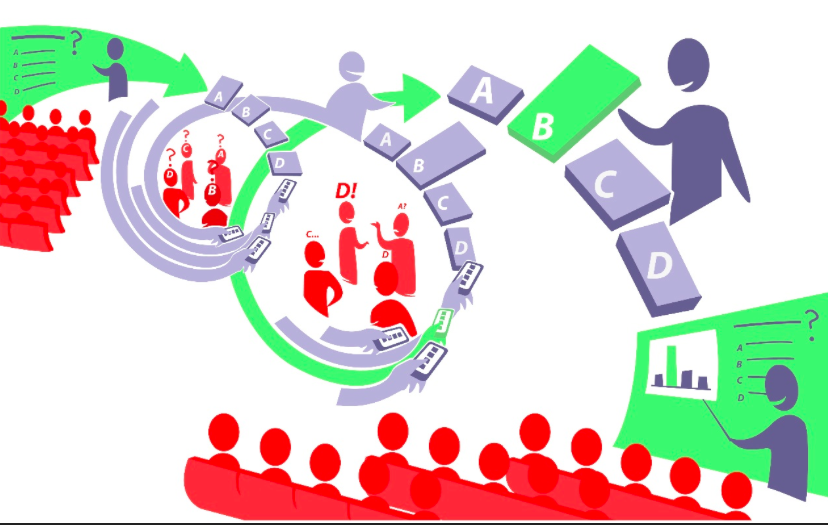New research investigates empathy and ethnic identity in mentoring for minority girls
 Peifer, J. S., Lawrence, E. C., Williams, J. L., & Leyton-Armakan, J. (2016). The culture of mentoring: Ethnocultural empathy and ethnic identity in mentoring for minority girls. Cultural Diversity And Ethnic Minority Psychology, 22(3), 440-446. doi:10.1037/cdp0000078
Peifer, J. S., Lawrence, E. C., Williams, J. L., & Leyton-Armakan, J. (2016). The culture of mentoring: Ethnocultural empathy and ethnic identity in mentoring for minority girls. Cultural Diversity And Ethnic Minority Psychology, 22(3), 440-446. doi:10.1037/cdp0000078
Summarized by Bri Santaniello
Introduction
Research all over the world shows mentoring can contribute various positive outcomes in youth populations. Models of youth mentoring have emphasized the role mentoring can play in identity development (e.g., Rhodes, 2005). More recently, there has been research indicating the importance of ethnic identity development, particularly for ethnic minority youth. Few studies, however, have investigated how mentoring programs can influence youth ethnic identity development, particularly considering how mentors’ ethnic identity (EI) may play a role in the process. Within the present quantitative study, relationships between mentor and mentee ethnic identity as well as mentors’ ethnocultural empathy (ECE) are investigated. The authors hypothesized that ethnic minority mentees that are paired with ethnic minority mentors would have higher levels of ethnic identity commitment and exploration and that mentors’ ECE and EI will be positively correlated with mentees’ ethnic identities.
Methods
Subjects participated in the Youth Women Leaders Program (YWLP), which combines group and one-on-one mentoring. This program lasting one academic year includes college women ranging from age 18 to 25 and middle school girls ranging from 11 to 13 years old. Mentors were recruited from a large, public university, where 40% of the participants were in their second year of college. Mentees from four nearby middle schools were nominated by teachers for being identified as “as-risk” for negative social, emotional, and/or academic outcomes. 67% of the mentees qualified for free or price-reduced lunch. There was a total of 95 mentoring pairs for this study. For the purposes of this study, participants were identified as majority group members (White) or minority group members (Black, Asian/Pacific Islander, Latino/ Hispanic, or Other). In total, there were 25% White mentees and 75% ethnic mentees. There were 59% White mentors and 41% minority mentors.
There were a total of three measures used to evaluate ethnic identity between both mentors and mentees. Phinney’s (1992) Multigroup Ethnic Identity Measure (MEIM) was used to assess both mentor and mentee’s ethnic identities. This consisted of two categories; commitment or one’s sense of belonging to a specific group and exploration related to understanding the meaning of group memberships (Phinney, 1990). Another measure was used to determine ethnocultural identity among the participants; a 15-item Empathetic Feeling and Expression subscale of the Scale of Ethnocultural Empathy (SEE; Wang et al., 2003). This subscale assesses internal feelings about cultural issues, injustice, and discrimination (e.g., “I share the anger of those who face injustice because of their racial and ethnic backgrounds”).
Results & Conclusion
The present study contributes to understanding the relationship between cultural match, ethnic identity, and ethnocultural empathy in youth mentoring. No significant differences were observed in mentee ethnic identity based on whether their mentor was a member of an ethnic minority or majority group. However, mentors’ ethnic identity exploration and commitment predicted higher levels of minority mentees’ EI exploration. Mentors who were willing to engage with their own ethnic identity may have helped their mentees feel safe and comfortable to do the same. Additionally, if mentors possessed high ECE, then mentees showed higher levels of ethnic identity development regardless of the mentor’s ethnic identity (majority or minority). The study suggests that mentoring relationships can play a role in cultural identity formation for mentor and mentee pairs with similar and different ethnic backgrounds.
Some limitations of this study include the small sample size, which limits generalizability across populations and different settings, and the reliance on self-report data. Also, this study was based on only one all female mentoring program that emphasizes culture and identity. Further research can examine these processes in different settings including mentoring programs serving males. It would also be helpful to better understand how programs can foster ECE in mentors as well as activities that may foster EI among mentors and mentees. Nevertheless, this preliminary study suggests the role mentoring may play in furthering ethnic identity development among youth.
To access the original research article, click here.










